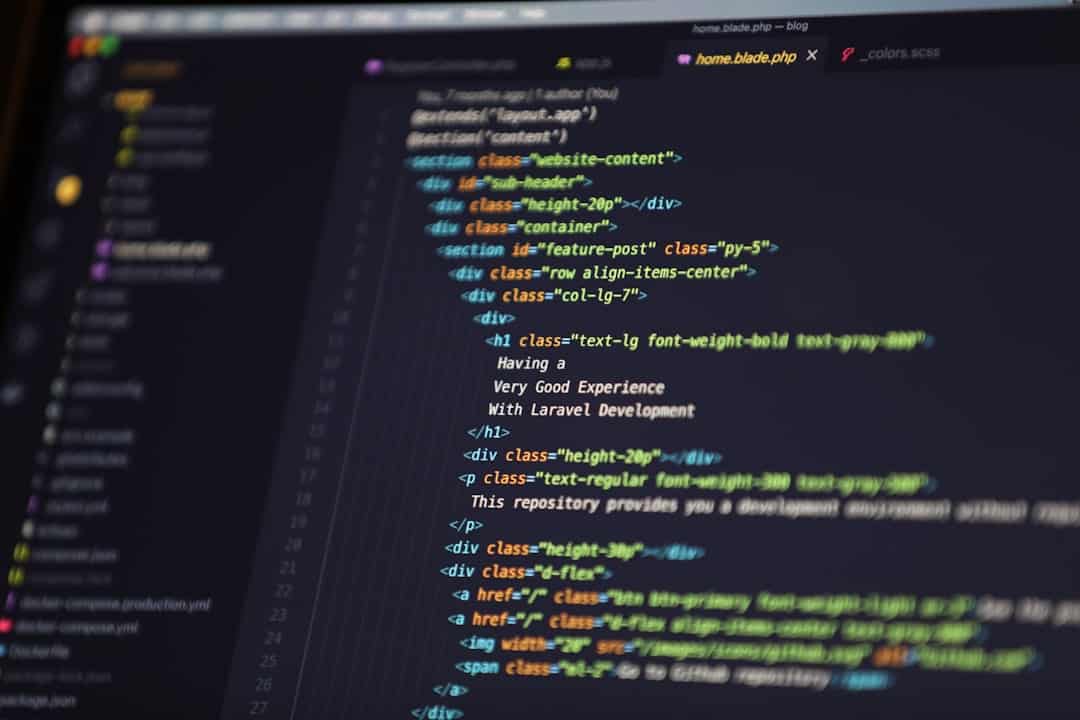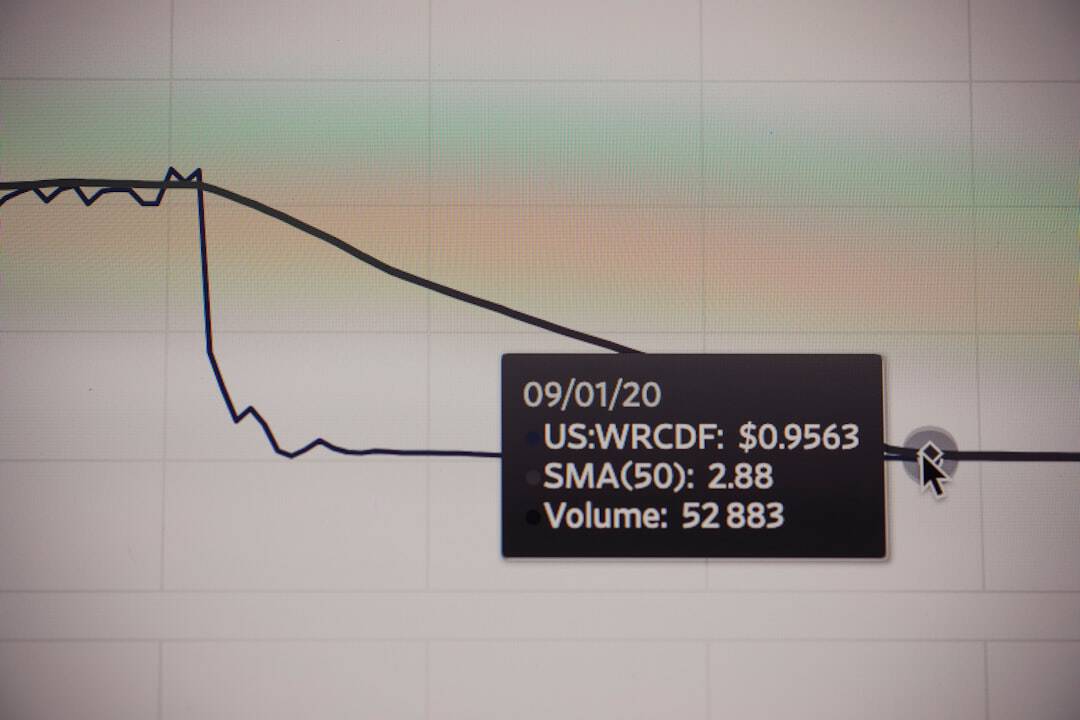The methodical review of data with the goal of gaining valuable insights and assisting in decision-making is known as data analysis. To find patterns, trends, and relationships in data, it entails inspecting, cleaning, transforming, and modeling the data. This procedure is crucial to contemporary scientific and business research because it helps organizations make decisions based on empirical data. When data is analyzed and modified using computer programming languages, this process is known as programming language processing. This method involves creating unique algorithms, using specialized libraries, and writing scripts to efficiently process and interpret large datasets.
Key Takeaways
- Data analysis and programming language processing go hand in hand in today’s digital world.
- Programming language processing in data analysis can lead to improved efficiency, accuracy, and scalability.
- Implementing programming language processing in data analysis involves using tools like Python, R, and SQL to manipulate and analyze data.
- Common challenges in using programming language processing for data analysis include data security, scalability, and integration with existing systems.
- Best practices for enhancing data analysis with programming language processing include using libraries, version control, and documentation to ensure reproducibility and transparency.
The growing amount and complexity of data generated in a variety of fields has made the integration of programming language processing and data analysis more and more important. Big data, machine learning, and artificial intelligence have made it necessary for organizations to look for more advanced ways to glean insightful information from their data. For handling large datasets, carrying out intricate calculations, and building predictive models, programming language processing provides strong tools & methods. The benefits of utilizing programming language processing for data analysis will be discussed in this article, along with strategies for successful implementation, typical problems and solutions, best practices for improving data analysis through programming, & actual case studies of accomplished projects. We will also talk about new directions and trends in programming language processing for data analysis in the future. Possession of Tools and Specialized Libraries.
A vast array of libraries & tools created especially for data manipulation & analysis are available for programming languages like Python, R, & Julia. These libraries include robust functions to work with data structures, run statistical analyses, visualize data, & create machine learning models. Automate & streamline processes. Using these libraries can help data analysts create more accurate and dependable results by streamlining their workflow and requiring less time and effort to complete complex analyses. Scaling analyses to accommodate big datasets and automating monotonous tasks are two more important advantages of programming language processing.
Programming languages enable analysts to create scripts that automate data transformation, cleaning, & modeling procedures. This frees up analysts’ time for higher-level duties like strategic decision-making and result interpretation. parallel processing and scalability. Also, because programming languages are well-suited for distributed computing & parallel processing, it is possible to analyze large datasets that would be impractical or impossible to handle with conventional tools. Increased Competitiveness and Efficiency. The effectiveness, precision, and scalability of analytical processes can all be greatly increased with the help of the robust set of tools & methods that programming language processing provides for data analysis.
| Metrics | 2019 | 2020 | 2021 |
|---|---|---|---|
| Number of Data Analysis Projects | 50 | 65 | 80 |
| Percentage of Projects Using Programming Language Processing | 30% | 40% | 50% |
| Improvement in Data Processing Speed | 15% | 20% | 25% |
In today’s data-driven business environment, organizations can stay ahead of the competition, make better decisions, & extract deeper insights from their data by utilizing these capabilities. There are several essential steps involved in implementing programming language processing in data analysis. First things first, make sure you’ve chosen the appropriate programming language for the job. Although R is well-known for its vast library of statistical functions, Python is a popular option due to its ease of use and adaptability. Because of its excellent performance and user-friendliness, Julia is becoming more & more popular for scientific computing.
After selecting a programming language, analysts can load, clean, transform, and analyze data using the built-in functions and libraries of that language. Analysts should then become acquainted with the particular libraries and tools that are available for the programming language of their choice. For instance, Python provides well-known libraries like scikit-learn for machine learning, NumPy for numerical computation, Matplotlib for data visualization, and Pandas for data manipulation. Libraries for data manipulation, visualization, and machine learning are available in R, including dplyr and ggplot2. Analysts can easily complete a variety of data analysis tasks by becoming proficient with these libraries.
Write custom scripts or create new algorithms in addition to utilizing pre-existing libraries to tackle distinct analytical problems. This could entail integrating several libraries, putting specific statistical techniques into practice, or performance-enhancing code. Analysts can customize their analysis to satisfy particular requirements and derive the most value possible from their data by fully utilizing the capabilities of the programming language of their choice.
Although data analysis can benefit greatly from programming language processing, analysts should be mindful of some common obstacles and traps. Learning a new programming language and its libraries can be difficult at first. Analysts used to performing their analyses with spreadsheet software or point-and-click tools may find this especially intimidating.
Analysts can, however, easily master the advanced features of their chosen programming language and gain proficiency in it with commitment & practice. The possibility of coding errors that could produce unreliable results is another problem. In contrast to point-and-click tools that might come with integrated validation and error checking, programming languages demand that analysts write error-free code from scratch. To ensure accuracy and dependability, analysts must be careful when testing their code, managing edge cases, and validating their findings. Also, when dealing with big datasets or intricate analyses, performance optimization can present a significant challenge.
It takes a thorough understanding of the underlying algorithms & data structures used by the programming language to write effective code that can handle large amounts of data. It might take time for analysts to profile their code, find bottlenecks, and improve performance in order to reach acceptable processing times. Analysts should adhere to a set of best practices in order to avoid the difficulties and dangers related to programming language processing in data analysis. First and foremost, it’s critical to dedicate time to fully mastering the selected programming language.
Getting acquainted with its libraries & tools, grasping its fundamental ideas, & mastering its syntax are all part of this. Analysts can work on their analyses more productively and successfully if they have a solid foundation in programming. Writing clear, modular, & maintainable code is another recommended practice.
To do this, intricate analyses are divided into more manageable parts or modules that can be independently tested and applied to various projects. Analysts may improve teamwork and expedite their workflow by adhering to best practices for code organization and documentation. Also, results should be rigorously validated by cross-checking findings using different approaches or comparing them to established benchmarks. This guarantees accurate and trustworthy results by assisting in the identification of possible biases or errors in the analysis process.
Lastly, by profiling their code, finding bottlenecks, and, when needed, putting effective algorithms and data structures in place, analysts should give performance optimization top priority. Analysts can optimize their data analysis procedures and maximize the value derived from their datasets by adhering to these best practices. Personalized Python User Interfaces. Python’s robust libraries, like scikit-learn and Pandas, have been utilized by Netflix to enhance its recommendation systems & customize user interfaces.
Netflix has improved its ability to retain subscribers and make more accurate content recommendations by examining viewing habits and user preferences. R-Enhanced Price Strategy Optimization. R’s statistical libraries, such as ggplot2 & dplyr, have been used by Airbnb to optimize pricing plans for hosts on its platform. Airbnb has determined pricing trends, demand patterns, & competitive benchmarks by evaluating historical booking data. This allows hosts to optimize their profits while guaranteeing competitive rates for guests.
Julia for High-Performance Data Analysis. In order to obtain a competitive advantage in algorithmic trading, financial institutions like Goldman Sachs have implemented Julia for high-performance data analysis. Goldman Sachs has created complex trading algorithms that analyze market data in real-time and execute trades with the least amount of latency possible by utilizing Julia’s speed and ease of use for numerical computing. These case studies show how programming language processing can help businesses make smart decisions that will lead to business success by helping them extract insightful information from their data.
Prospectively, programming language processing in data analysis is poised to witness a number of noteworthy advancements and trends. An emerging trend in big data technologies like Hadoop and Apache Spark is the growing amalgamation of programming languages. This opens up new possibilities for more efficient handling of big data by enabling analysts to perform distributed computing on large datasets using well-known programming languages like Python or R.
Adoption of specialized domain-specific languages (DSLs) for particular analytical tasks, like probabilistic programming or deep learning, is another trend. These DSLs make it simpler for analysts to express complex models and algorithms succinctly by offering syntax and functionality that are specifically designed for different types of analyses. Also, with the use of programs like R Markdown and Jupyter Notebooks, there is an increasing focus on transparency and reproducibility in data analysis. With the help of these tools, analysts can interactively record their analyses in a format that blends narrative explanations, code, and graphics step-by-step. In analytical workflows, this encourages cooperation, knowledge exchange, and accountability.
Finally, a strong collection of methods and tools for improving data analysis in a variety of industries are provided by programming language processing. Organizations can stay ahead of the competition in today’s data-driven business environment by utilizing the advantages of programming languages like Python, R, or Julia to enhance their analytical processes, obtain deeper insights from their data, and make better decisions. Programming language processing in data analysis is not without its difficulties and traps, but by adhering to best practices, analysts can get past these difficulties and succeed in their tasks. Programming language processing in data analysis appears to have a bright future ahead of it, with trends like integration with big data technologies and the adoption of specialized DSLs.
If you’re interested in exploring virtual spaces and the metaverse, you may also want to check out this article on challenges and opportunities in the metaverse, specifically addressing privacy and security concerns. Click here to read more about how these issues are being addressed in the rapidly evolving world of virtual reality.
FAQs
What is programming language processing?
Programming language processing refers to the activities involved in the analysis, translation, and execution of programming languages. This includes tasks such as parsing, semantic analysis, code generation, and optimization.
Why is programming language processing important?
Programming language processing is important because it enables the creation of software tools and systems that can understand and manipulate programming languages. This is essential for tasks such as compiling code, interpreting scripts, and developing integrated development environments (IDEs).
What are the key components of programming language processing?
The key components of programming language processing include lexical analysis (tokenization), syntax analysis (parsing), semantic analysis, code generation, and optimization. These components work together to translate human-readable code into machine-executable instructions.
What are some examples of programming language processing tools?
Examples of programming language processing tools include compilers, interpreters, and code editors. Compilers translate source code into machine code, interpreters execute code directly, and code editors provide features for writing and editing code.
What are some common programming language processing techniques?
Common programming language processing techniques include regular expressions for lexical analysis, parsing techniques such as LL and LR parsing for syntax analysis, type checking for semantic analysis, and various optimization strategies for code generation.
How does programming language processing relate to software development?
Programming language processing is essential for software development because it enables the creation of tools and systems that can understand and manipulate programming languages. This includes tasks such as compiling code, interpreting scripts, and providing code analysis and debugging features.











Leave a Reply